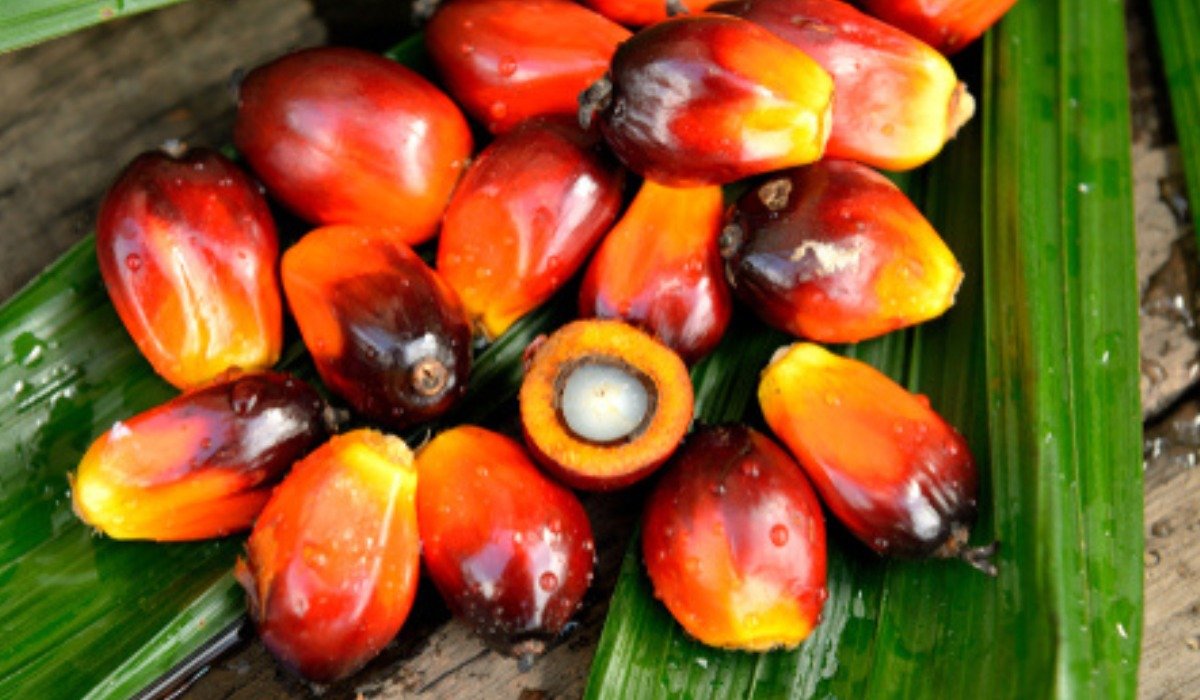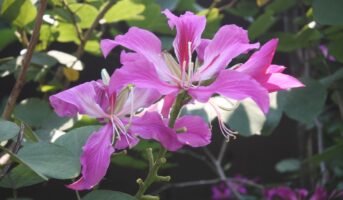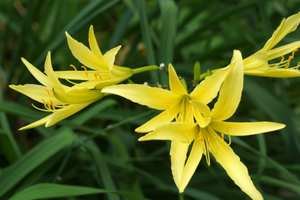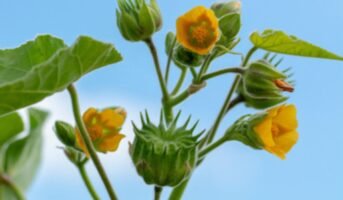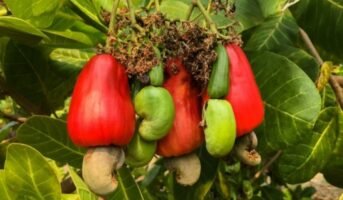Elaeis guineensis, often known as the African oil palm, is native to western and southwestern Africa. Both palm oil and kernel oil can be extracted from an African oil palm. Palm oil, which is extracted from the fruit, is mostly derived from this tree.
Palm oil’s versatility means it can be used for anything from frying to creating ice cream, from margarine to vegetable ghee to bakery fats.
On the other hand, kernel oil comes from the kernel of the fruit. It can be used as a substitute for coconut oil due to its non-drying nature.

Source: Pinterest
Elaeis Guineenis: Key facts
| Common name | African oil palm |
| Botanical name | Elaeis guineensis |
| Family | Arecaceae |
| Sunlight | Full sun |
| Height | 20 m |
| Soil | Loamy, clay soil |
| Soil pH | 6.5-7.5 |
See also: 21 best flowers for your garden
Elaeis guineenis: Features
Elaeis guineensis has a single trunk that can go as wide as 75 cm and as tall as 20-30 m. The dark green leaves are pinnately arranged. The tiny blossoms cluster together in large numbers. The fruit of the palm tree is a deep red and clusters together in big bunches.
Elaeis guineenis: How to grow?
Researchers have put in a lot of time and effort over the past century to increase oil palm yields by, among other things, planting just the highest oil-yielding kinds. A farmer needs to start with oil palm seedlings and locate an area with favourable growing conditions. Countries like Indonesia, Malaysia, Colombia, and Nigeria produce oil palm because it thrives in tropical climates. The two countries with the greatest oil palm plantation areas, Malaysia and Indonesia, both rely heavily on smallholder production.
How to grow with Elaeis Guineensis seeds?
This plan is hard to grow through seed germination. Elaeis Guineensis seed germination takes 6 months to 1 year with over 40% failure rate. The effects of magnetic fields on plant growth have been the subject of many research studies
Over several months, seeds grow into seedlings in nurseries. After a year and a half, right before the monsoons hit, they’re moved to the plantation. They’re placed so that as much sunshine as possible can reach each individual plant. During this time, the palms are nourished and protected from pests so that they can flourish.
Elaeis Guineenis: Maintenance
Climate
- It needs between 2,500 and 4,000 millimetres of steady rain every year.
- Minimum temperatures are between 22 and 24 degrees Celsius.
- A minimum of five to six hours of direct sunlight every day is necessary to develop Elaeis guineensis.
- Optimal growth occurs at a humidity level of 80%.
Soil
Deep, well-drained, medium-loam soil that is rich in humus is ideal for growing this plant. The pH range where the soil responds best is between 6.5 and 7.5.
Fertiliser
It is not necessary to fertilise palm seedlings until they begin to grow actively, at which point a light liquid fertiliser can be introduced. Feed your palm palms using fertiliser made just for them. The common belief that palm trees don’t require fertiliser couldn’t be further from the truth.
Water
Continuous soil moisture boosts its growth and output. Water availability depends on soil depth, water supply, and water retention. It requires 120–150 mm of water per month for evapotranspiration. Perennial water sources allow basin irrigation. But if the terrain is hilly and water is short during summer months, drip irrigation is recommended.
Weed Control
Ring-weeding keeps Elaeis guineensis basins weed-free. Young palms need weed-free roots. Depending on weed growth and rainfall, hand weeding is done up to four times a year in the early years of the plantation. Herbicide use has increased. Selecting and applying herbicides carefully protects young palms. Contact herbicides are preferable to translocated ones.

Source: Wikipedia
Elaeis Guineenis: Uses
- There are numerous traditional therapeutic applications for the plant.
- Gonorrhoea, menorrhagia, and prenatal abdominal pain are all conditions that can be alleviated with the use of a palm heart.
- The analgesic properties of the roots complement the topical benefits of the leaf sap for skin problems. The pulp’s oil has moisturising properties. Thus, it’s often utilised as an excipient in topical herbal remedies.
- Palm oil is utilised in the steel industry (for sheet-steel production and tin plating, where it shields the iron before the application of tin), and epoxidized palm oil as a plasticizer and stabilisers in PVC plastics.
Elaeis Oleifera vs Elaeis Guineensis
Oil palm trees belong to the family of plants known as Palmae or Palmaceae and to the genus Elaeis. Elaeis is composed of two species: Elaeis Guineensis and Elaeis Oleifera. Elaeis Guineensis is the most commonly found and cultivated paln tree in Brazil. Elaeis Oleifera is native to tropical areas of Central and South America. It has little commercial value compared with Elaeis Oleifera.
What different oils can Elaeis Guineensis produce?
The tree can produce 2 types of oil can be produced:
- Crude palm oil comes from squeezing the fruit
- Palm kernel oil from crushing the kernel in the middle of the fruit
What is Elaeis Guineensis kernel oil?
The Elaeis Guineensis tree produces 2 different edible oils. Elaeis Guineensis kernel oil is an edible plant oil derived from the kernel of this tree.
Is Elaeis Guineensis good for skin?
Antioxidants present in the Elaeis Guineensis seed are found to be useful for skin care.
FAQs
Can palm oil be cultivated everywhere?
Only tropical nations cultivate the oil-producing Elaeis guineensis trees.
What is the common name of Elaeis guineensis?
Elaeis guineensis is also known as African oil palm.
Housing News Desk is the news desk of leading online real estate portal, Housing.com. Housing News Desk focuses on a variety of topics such as real estate laws, taxes, current news, property trends, home loans, rentals, décor, green homes, home improvement, etc. The main objective of the news desk, is to cover the real estate sector from the perspective of providing information that is useful to the end-user.
Facebook: https://www.facebook.com/housing.com/
Twitter: https://twitter.com/Housing
Email: [email protected]
